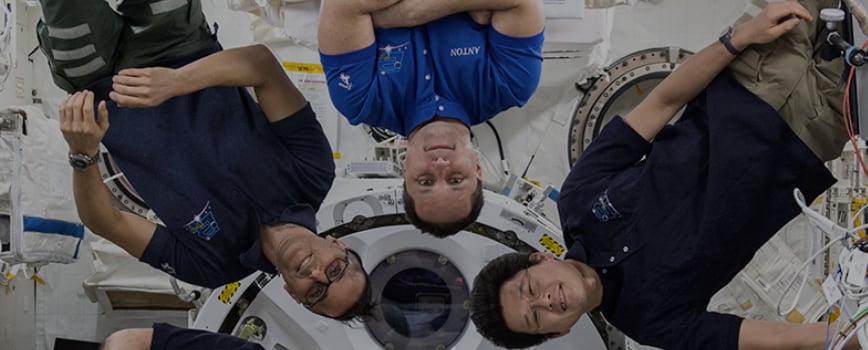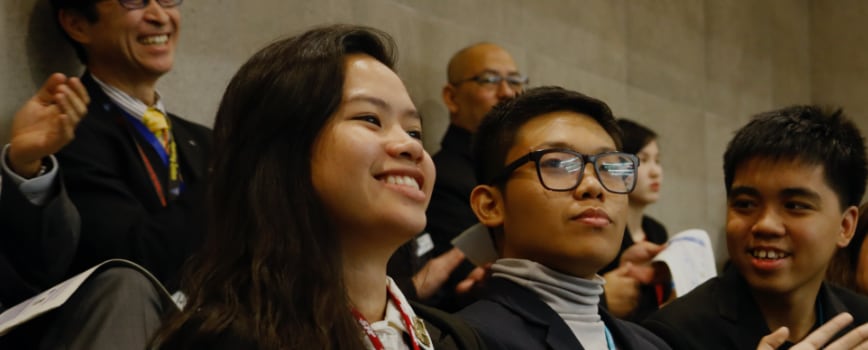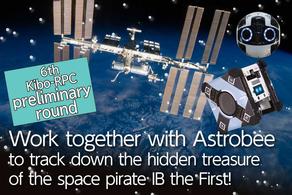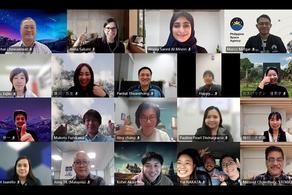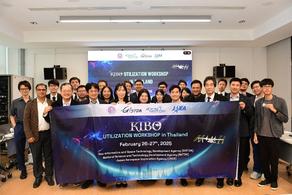- Announcements
The experiment themes for Asian Try Zero-G 2023 have been selected!
- Kibo Utilization Office for Asia (KUOA)
- Experiment at Kibo
Summary
After conducting a first selection process for each participating country/region, 11 projects in Category A and 5 projects in Category B were selected by the final selection committee that included all participating countries/regions. (Selected themes are listed in Tables 1 and 2, with details in the Final Selection section.)
** Participating countries/regions (in alphabetical order): Australia, Bangladesh, Indonesia, Japan, Nepal, Philippines, Singapore, Taiwan, Thailand
Table1 Category A (Simple Physical Experiments) Selected Themes (in alphabetical order of country/region name)
| Country/Region | Theme |
| Australia | Twist Athlete Robot Experiment |
| Bangladesh | Finding the shape of Magnetic Field Lines |
| Indonesia | Lato-lato motion trials in zero gravity |
| Indonesia | Try a total elastic collision in space using the Lato-Lato game |
| Japan | Acceleration of liquid surface in capillary action in microgravity |
| Philippines | Oloid's Movement in Microgravity |
| Singapore | Magnus Glider Looping Phase in Microgravity |
| Singapore | Zero-G Siphon |
| Taiwan | Behaviors of the magnus effect in zero-gravity |
| Thailand | Water Spheres and Electrostatic Force |
| Thailand | Stranger things two ball on string |
Table2 Category B (Exercises) Selected Themes (in alphabetical order of country/region name)
| Country/Region | Theme |
| Japan | Rubber gymnastics on air chair |
| Japan | Flexibility exercises with rope |
| Philippines | The Effectivity of Elastic Resistance Band Exercise When Performed in Zero-Gravity |
| Taiwan | Let us blow |
| Thailand | Starfish exercise for Microgravity |
About Preliminary Selection
In Thailand, which received the largest number of applications this year, the National Science and Technology Development Agency (NSTDA) managed the Asian Try Zero G 2023 program, which was reviewed by a committee including the NSTDA Space Education Program Manager and experts from the National Center for Genetic Engineering and Biotechnology (BIOTEC), National Metals and Materials Technology Center (MTEC), and National Electronics and Computer Technology Center (NECTEC).
(Image 1)
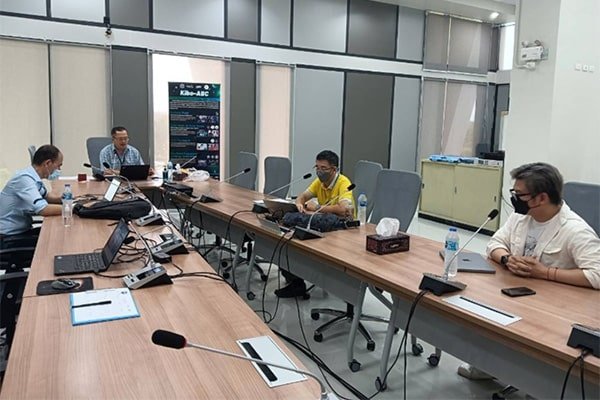
(Images 2 and 3)
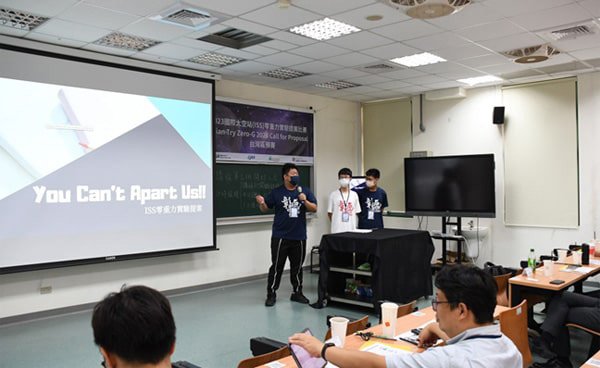
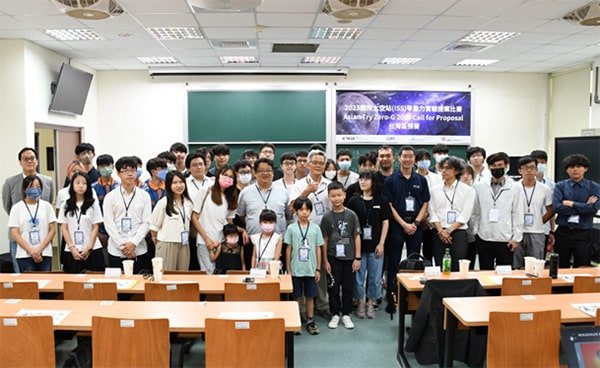
About the Final Selection
At the final selection meeting (Image 4) held by all participating institutions, the 32 themes that passed the first selection were evaluated using a common evaluation sheet with reference to the above advice, and 11 themes*** from Category A and 5 themes*** from Category B were selected.
The selected themes will be conducted by Astronaut Furukawa.

Themes for Asian Try Zero-G 2023 (Category A)
Twist Athlete Robot Experiment (Australia)
| Proposer | Australian National University, 1 person |
|---|---|
| Experiment Description |
Changes in the momentum of a rotating object lead to changes in its axis of rotation. Observe the change in the axis of rotation when bars that are crossed are tied together with rubber, make parallel and thrown in a microgravity environment. 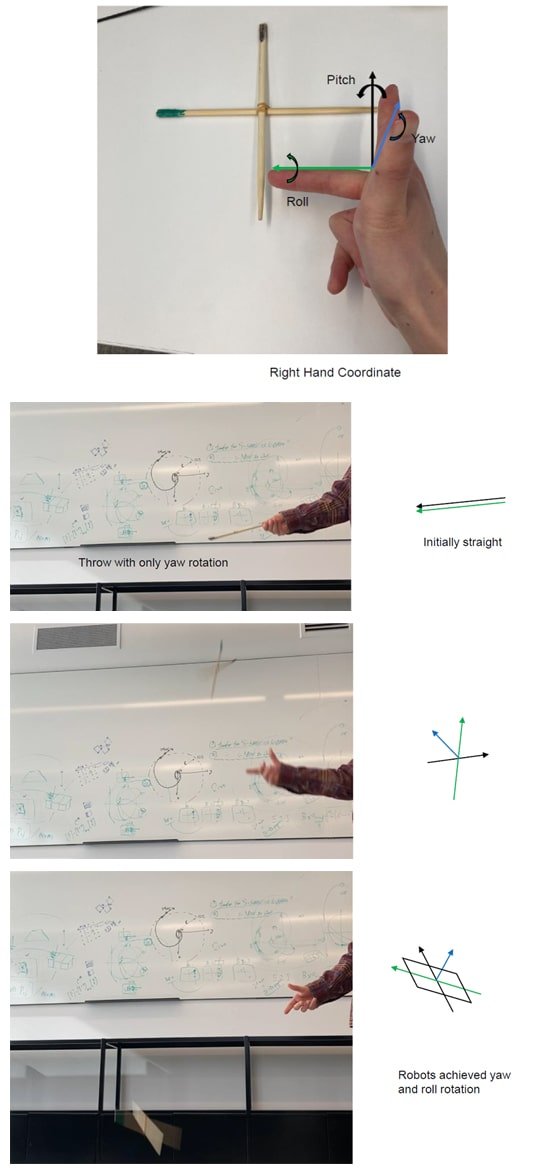
|
<Points of Selection>
Although we have previously conducted experiments to observe changes in the axis of rotation under microgravity, this is a proposal that uses unique equipment.
We will observe the difference of the motion in microgravity compared to the motion on the ground.
Finding the shape of Magnetic Field Lines (Bangladesh)
| Proposer | Homeschooled, 1 person |
|---|---|
| Experiment Description |
Three-dimensional visualization and observation of changes in magnetic field lines when a magnet is brought close to a transparent container containing iron chips, etc., in a microgravity environment. 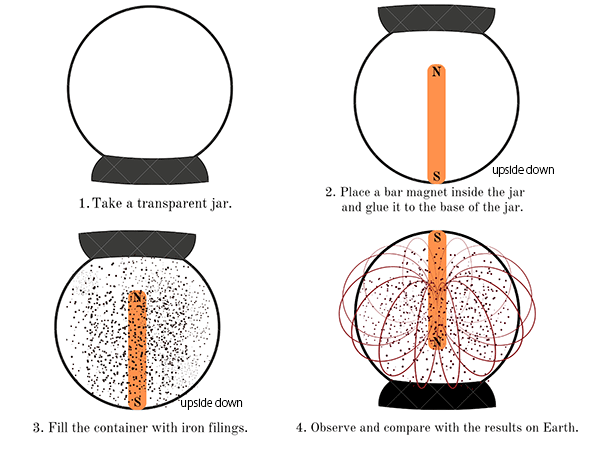
|
<Points of Selection>
This is an interesting proposal, as there have been no simple experiments on magnetic field lines performed on the ISS.
Lato-lato motion trials in zero gravity (Indonesia)
| Proposer | University of North Sumatera, 2 people |
|---|---|
| Experiment Description |
To see if Lato-Lato (a popular game among Indonesian children, also known as American Clacker) can be performed in a microgravity environment. 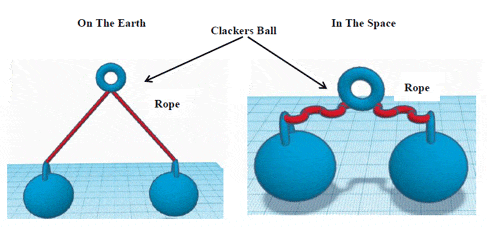
|
<Points of Selection>
Although it is a simple question of whether movements that are difficult even on the ground can be performed in a microgravity environment, it is interesting to predict the movements of Lato-Lato (American Clacker), which has never been tested in Asian Try Zero G before.
Try a total elastic collision in space using the Lato-Lato game (Indonesia)
| Proposer | The Republic of Indonesia Defense University, 2 people |
|---|---|
| Experiment Description |
To test how the hand swing width and hand swing speed change when Lato-Lato is performed in a microgravity environment compared to on the ground. 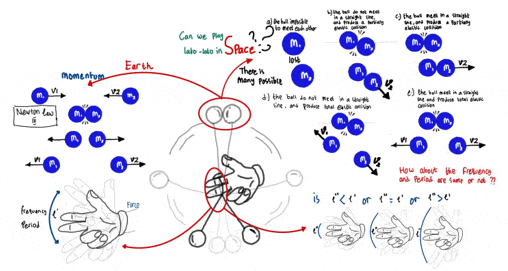
|
<Points of Selection>
While the hand swing will be constant regardless of the performer when trying to move the Lato-Lato (American Clacker) on the ground, one would expect the hand swing to be different in microgravity space than on the ground.
Acceleration of liquid surface in capillary action in microgravity (Japan)
| Proposer | Tokyo Gakugei University Senior High School, 13 people |
|---|---|
| Experiment Description |
Conduct experiments on capillary action in a microgravity environment. Observe how differences in capillary diameter and fluid viscosity affect the rate of rise of the liquid surface. 
|
<Points of Selection>
When the proposer conducted an experiment using a drop tower, differences were observed in the rate of rise of the liquid level depending on the diameter of the capillary. The result that the larger the diameter, the higher the rise velocity is very interesting and should be verified on the ISS.
Oloid's Movement in Microgravity (Philippines)
| Proposer | Rizal Technological University, 1 person |
|---|---|
| Experiment Description |
An oloid is geometrically expandable and can roll smoothly and straight like a ball despite its pointed shape. In addition, when rolling on a flat surface, the center of gravity of an oloid moves smoothly, alternating between a certain distance to the left and right. We will verify the movement of the oloid when it is thrown and rolled in a microgravity environment. 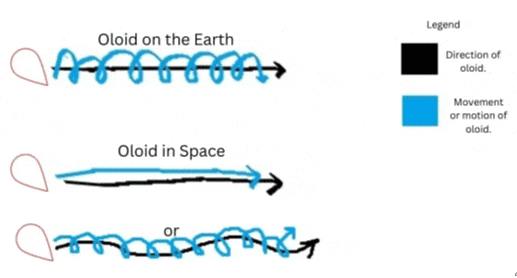
|
<Points of Selection>
Observing the behavior of oloid-shaped objects, which have unique movements even on the ground, in a microgravity environment is both simple and interesting.
Magnus Glider Looping Phase in Microgravity (Singapore)
| Proposer | NUS High School of Math & Science, 1 person |
|---|---|
| Experiment Description |
On the ground, magnus gliders typically fly in loop and arch trajectories. This experiment will examine the trajectory of a magnus glider in a microgravity environment. 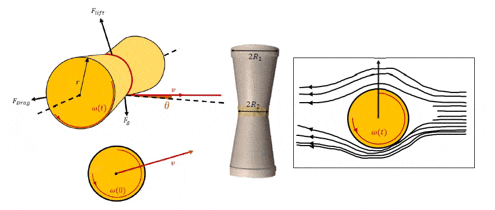
|
<Points of Selection>
This is a proposal to effectively observe the magnus effect using a simple system of paper cups and rubber bands in orbits where resources are limited.
Zero-G Siphon (Singapore)
| Proposer | Catholic High School, 2 people |
|---|---|
| Experiment Description |
In a microgravity environment, insert a straw into water, then use another straw near the opposite side of the water to verify the movement of the water when exhaled. 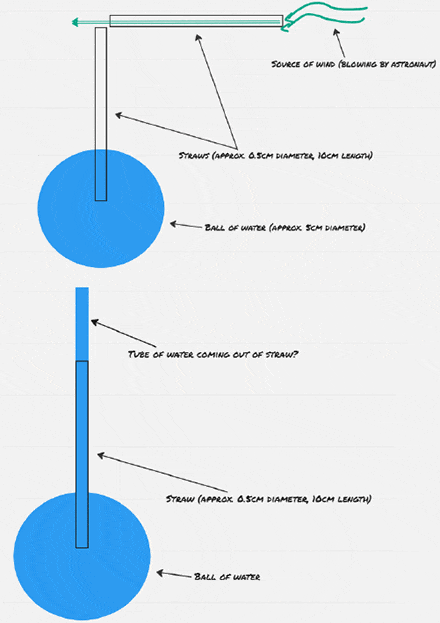
|
<Points of Selection>
It is the proposer's speculation that the water surface may continue to rise in a microgravity environment, while only a fixed rise in the water surface is observed on the ground. It is a very interesting experiment proposal.
Behaviors of the magnus effect in zero-gravity (Taiwan)
| Proposer | National Taiwan Normal University, 1 person Emory University & Georgia Tech, 1 person PU TAI Senior High School, 1 person |
|---|---|
| Experiment Description |
On the ground, magnus gliders typically fly in loop and arch trajectories, however, this experiment will examine the trajectory of a magnus glider in microgravity conditions. 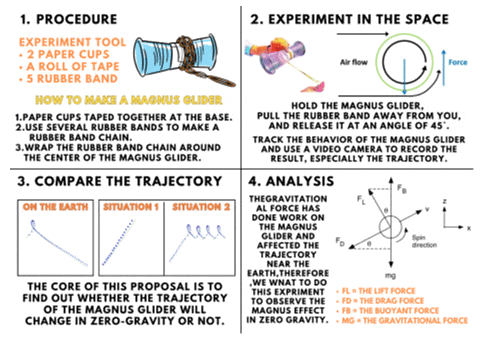
|
<Points of Selection>
This is a proposal to effectively observe the magnus effect using a simple system of paper cups and rubber bands in orbits where resources are limited.
Water Spheres and Electrostatic Force (Thailand)
| Proposer | Suankularb Wittayalai School, 1 person |
|---|---|
| Experiment Description |
Water is attracted by static electricity. We will test whether it is possible to move water balls of different sizes in a microgravity environment and whether the shape of the water balls changes when electrostatically charged objects are brought close to the water balls. 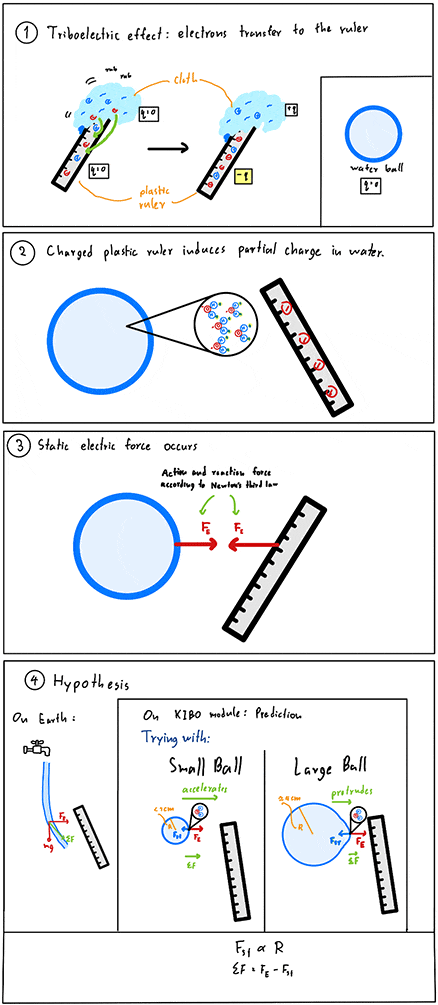
|
<Points of Selection>
This proposal effectively observes the relationship between water and static electricity.
Stranger things two ball on string (Thailand)
| Proposer | Yupparaj Wittayalai School, 4 people |
|---|---|
| Experiment Description |
Verify the motion of two spheres connected by a string and rotated in a microgravity environment. 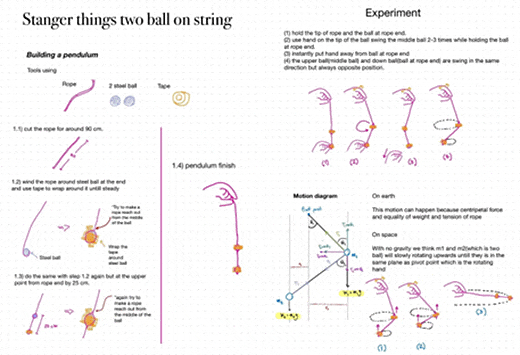
|
<Points of Selection>
It is a simple proposal to spin a string with two weights attached, but it is a unique proposal to observe the difference in behavior in a microgravity environment.
Themes for Asian Try Zero-G 2023 (Category B)
Rubber gymnastics on air chair (Japan)
| Proposer | Niihama National College of Technology, 1 person |
|---|---|
| Exercise Description |
Exercises with rubber bands made for the elderly will be performed in a microgravity environment. On the ground, the exercises will be performed while sitting in a chair, but in orbit, the exercises will be performed in an air chair. The use of a rubber band enables upper and lower body exercises by utilizing the contraction force of the rubber. 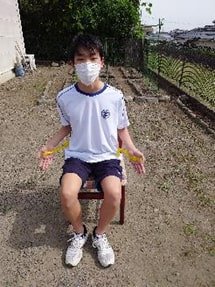
|
<Points of Selection>
It allows astronauts to exercise alone, is simple to prepare, and appears to be suitable for space.
Flexibility exercises with rope (Japan)
| Proposer | Nonoike Junior High School, 4 people |
|---|---|
| Exercise Description |
Prepare strings of different lengths and test whether it is possible to use them to circle around the body (under the legs, around the back, and back to the front) in a microgravity environment. 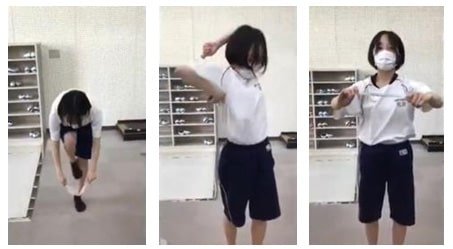
|
<Points of Selection>
In microgravity, the load on the joints is reduced, and the joints are known to become less mobile; this proposal is expected to be a space-appropriate exercise because the movements are performed while moving the joints.
The Effectivity of Elastic Resistance Band Exercise When Performed in Zero-Gravity (Philippines)
| Proposer | Bataan National High School Senior High School, 8 people |
|---|---|
| Exercise Description |
Perform squats and stretches with rubber bands in a microgravity environment. 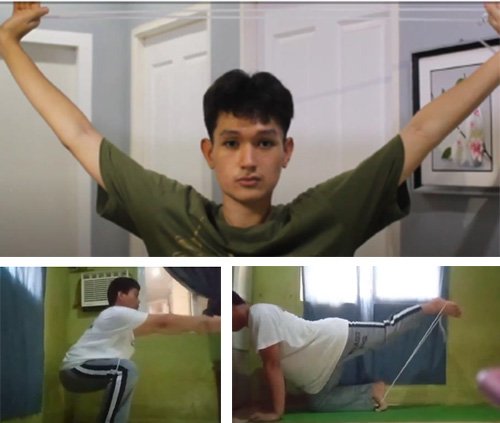
|
<Points of Selection>
This exercise can be performed by astronauts alone using a rubber band. It is simple to prepare and may be suitable as an exercise in space.
Let us blow (Taiwan)
| Proposer | Taichung Municipal Taichung Girls' Senior High School, 2 people |
|---|---|
| Exercise Description |
Demonstrate whether you can move and rotate your body by blowing out Astronaut’s breath through pipes of different diameters. 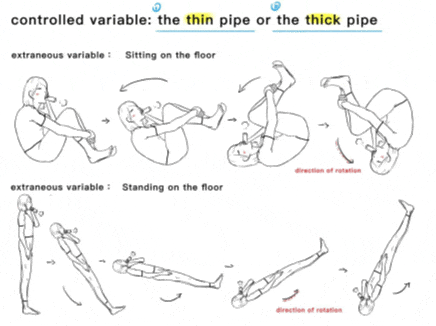
|
<Points of Selection>
The straw-like object is held in the mouth and the body is rotated by recoil by exhaling as much as possible. This is a unique proposal because there is little movement to keep exhaling in the orbit, coupled with the rotation of the body. Also interesting is the idea of changing the diameter of the straw-like object in a physical experiment.
Starfish exercise for Microgravity (Thailand)
| Proposer | Rayongwittayakom school, 2 people |
|---|---|
| Exercise Description |
Perform training with one elastic band attached to each foot and one to each hand (both hands and both feet) and with hands and feet spread apart. 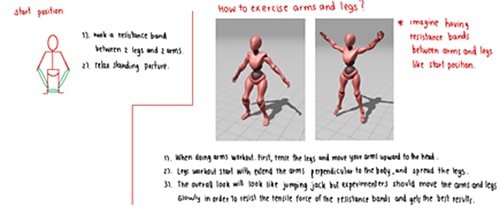
|
<Points of Selection>
This exercise can be performed by astronauts alone using a rubber band. It is simple to prepare and is considered suitable as an exercise in space.
Unless specified otherwise, rights to all images belong to ©JAXA




